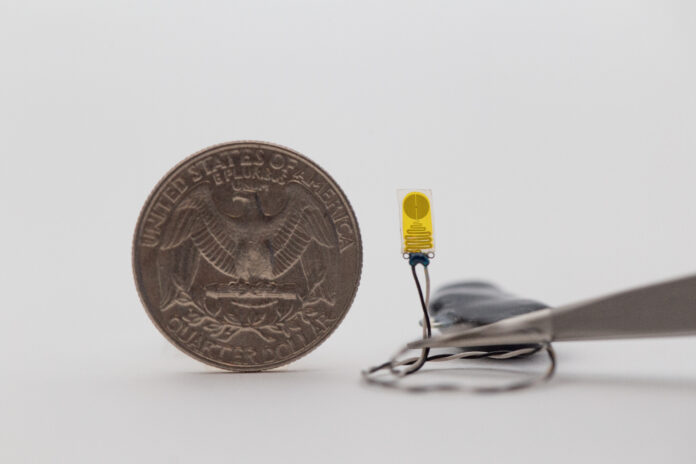
A tiny bioelectronic device surgically placed upon a transplanted kidney can detect warning signs of organ rejection up to three weeks earlier than current methods, a study in rats suggests.
The wireless technology, which is smaller than a fingernail and about the width of a human hair, uses thermal changes as biophysical surrogates of rejection.
An ultra-thin, stretchable thermal sensor continually tracks kidney temperature and thermal conductivity, which are used respectively as surrogate markers of organ inflammation and perfusion.
When the temperature changes, an alert is sent to a smartphone or tablet, the researchers report in the journal Science.
“If the temperature varies, it can be a red flag for the patient and the doctor to get evaluated, to seek medical attention, which could be with blood markers to corroborate the temperatures findings but most likely a biopsy,” researcher Lorenzo Gallon, PhD, a professor at Northwestern University in Chicago, told Inside Precision Medicine.
“This enters into the scope of precision medicine. You have a device that informs the patient and the doctor and you can then apply the other standard of care that is available to us to make it a diagnosis.
“And when you make the diagnosis, an important aspect of that is if you do it early, as early as possible, it means better therapy. It means that you are going to intervene in that problem earlier than if you had waited for maybe weeks, when maybe blood markers go up and you have what we call a clinical rejection.”
The current gold standard for identifying transplant rejection is through organ biopsy, which can be associated with risks and complications such as bleeding, infection, or damage to nearby organs.
Blood and urine markers, such as serum creatinine or blood urea nitrogen levels can also be used but can lead to false positives and negatives and are only assessed periodically.
The sensor developed by the researchers is just 0.3 centimeters wide, 0.7 centimeters long and 220 microns thick and sits just under a fibrous layer of the kidney called the renal capsule.
The device was able to detect the onset of rejection weeks before clinically relevant blood biomarkers were able to in immunosuppressed animals. For non-immunosuppressed animals, this was days earlier.
Kidney temperature provided a consistent and early warning sign of subclinical acute rejection. Unlike with isografts, non-immunosuppressed animals showed an initial rise of kidney temperature with allografts, but not thermal conductivity, followed by a decrease and this preceded any change in renal function by three days in rejected allografts.
In rats transiently treated with the commonly used immunosuppressant tacrolimus, a change in kidney thermal conductivity indicative of rejection occurred two to three weeks before any change in serum biomarkers.
In a related Perspective article, Mohamad Zaidan and Fadi Lakkis, both from the University of Pittsburgh, note that the biosensor appeared to have the additional benefit of detecting whether immunosuppressive drugs were being taken compliantly.
They add: “Although several hurdles remain to be overcome, the prospect of integrating continuous monitoring into clinical practice could represent a major step toward personalized organ transplant care.”













